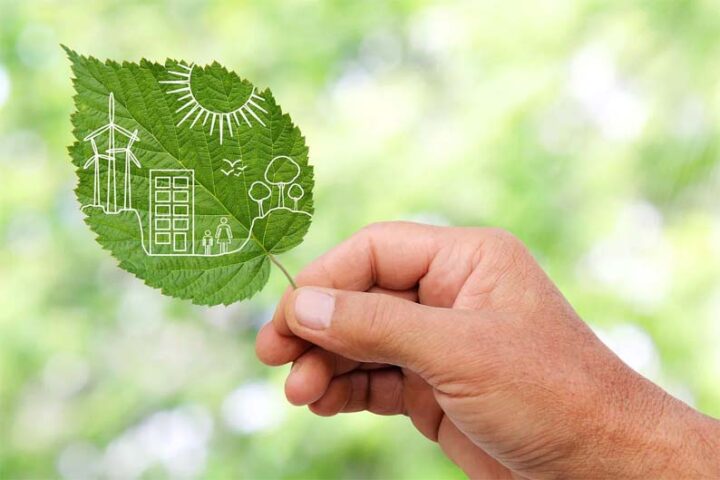.
By Charalampos Theopemptou
There is an ever increasing interest world wide in green buildings with European and American building certifications in place.
The first thing that comes to mind for most people when they hear about green buildings is energy. Surely energy is very important but its only one of many parameters that will make a building green.
In a green building where we require to be able to purchase as little energy from outside and the wellbeing of the occupants is of the outmost importance.
In the northern hemisphere, the south side of the house will be the one that should have the large doors and windows and the north side the small openings. Therefore the orientation of the building is of the outmost importance.
We should however pay attention to the need to gather as much heat from the sun during the winter and prevent the heat from entering the building through its openings in the summer. This, together with good insulation, use of natural lighting (or even passive solar lights), low energy consuming fittings and wind and solar energy production, will reduce immensely the energy needs of the building.
A feature that will add to the attractiveness of the building is the addition of a green roof or a green wall both of which also improve the energy performance of the building. Space permitting, a green wall is a very attractive feature to have inside the building.
Another much easier issue to deal with is the water consumption of the house. We need to choose dual-flush toilets, regulate the water pressure and add fittings to taps and water outlets. Rainwater harvesting and reuse in the garden or for the toilets combined with ground water, will greatly reduce water consumption. It is of course important to make sure that our garden is designed for the type of climate we have and use as little water as possible.
An important feature that will also have a large impact on the energy needs of the building is the correct planting of trees around the building. We need to prevent cold weather reaching the building from the north with a green barrier made up from bushes and trees. In the south we need to have trees that will cast a shade on the building during the summer, but they will lose their leaves during the winter to allow the sun to warm the walls and enter the windows and doors.
For those that are adjacent to the beach and want to have a swimming pool you will find that two wells (in and out of the pool) will give you plentiful supply of healthy sea water that does not need to be treated with chemicals as you can keep replenishing this continually.
For a good healthy environment inside a house with children, we need to have excellent indoor air quality.
In order to achieve this, we need to avoid having exposed horizontal surfaces and carpets that can gather dust, and pay attention to the paints used, the materials with which furniture are made and the cleaning products used.
These are very important especially in the children’s room where we don’t want plastics; we need to carefully select certified textiles and all paints on walls and furniture should be ecologically certified.
Certain plants are also important to have inside the house, like the “Areca” which attracts the harmful dust particles, the “money plant” which absorbs chemicals and the “sanseviera or Mother in law’s tongue” which keeps producing oxygen day and night.
And of course the residents of a green building should cycle regularly so a provision should be made for the safe parking of the family bicycles.
This is just a taste of the features we expect in a green building which should also be designed to be liveable for the whole life of the couple and the family, from being young to be able to move about when they get old.
Charalampos Theopemptou is a lecturer, Department of Environmental Science and Technology at the Cyprus University of Technology and a former Environment Commissioner of the Republic.
www.theopemptou.com [email protected] Twitter: @theopemptou







